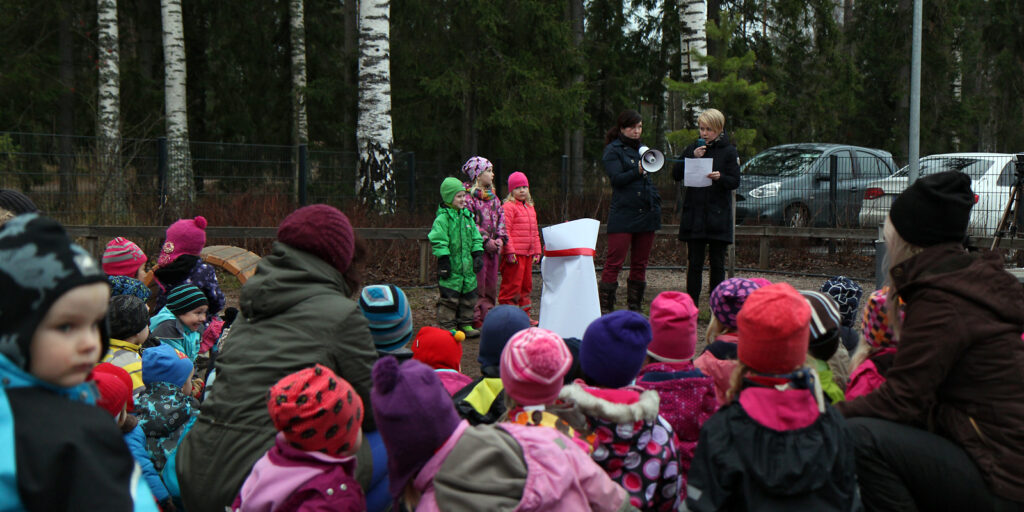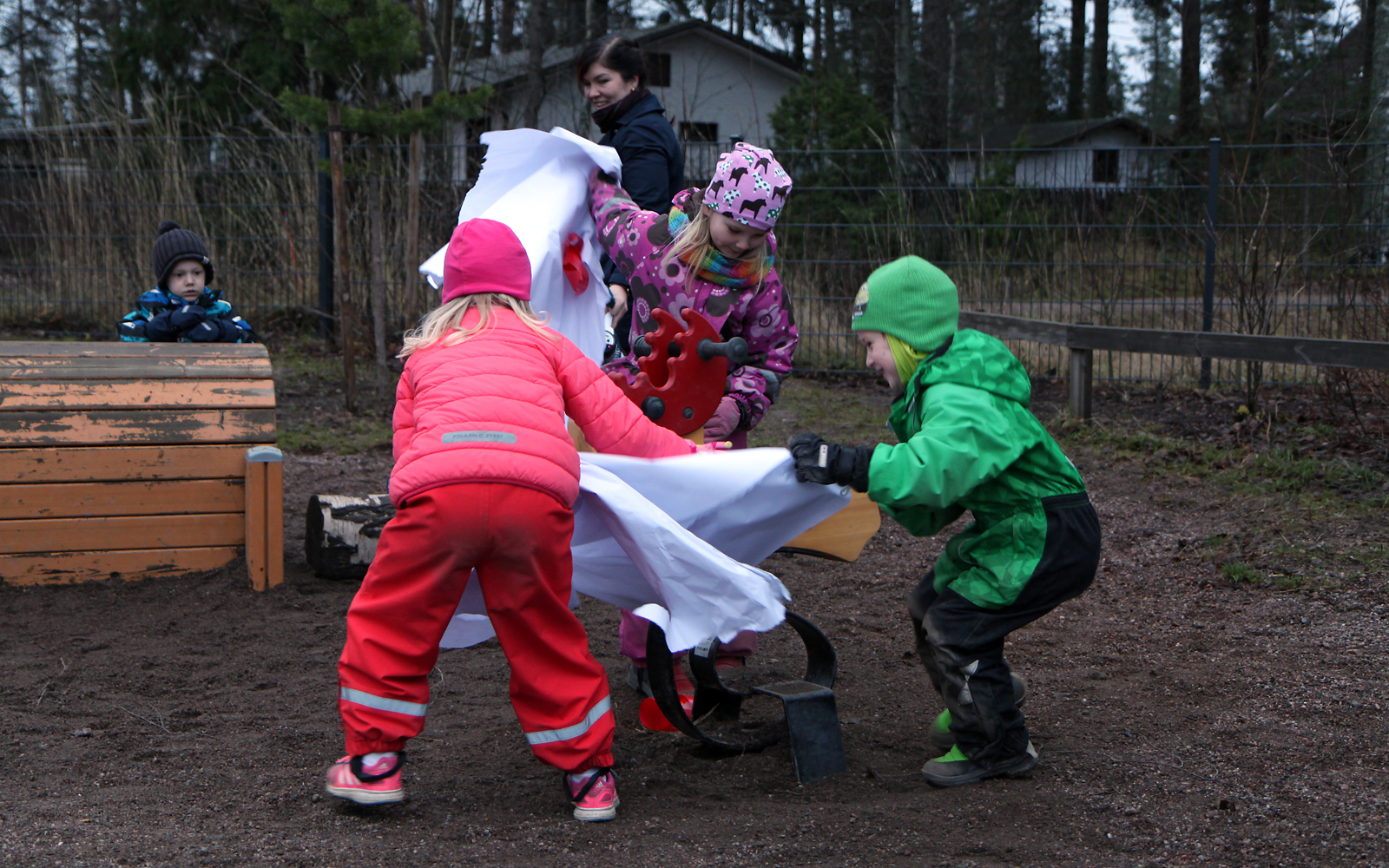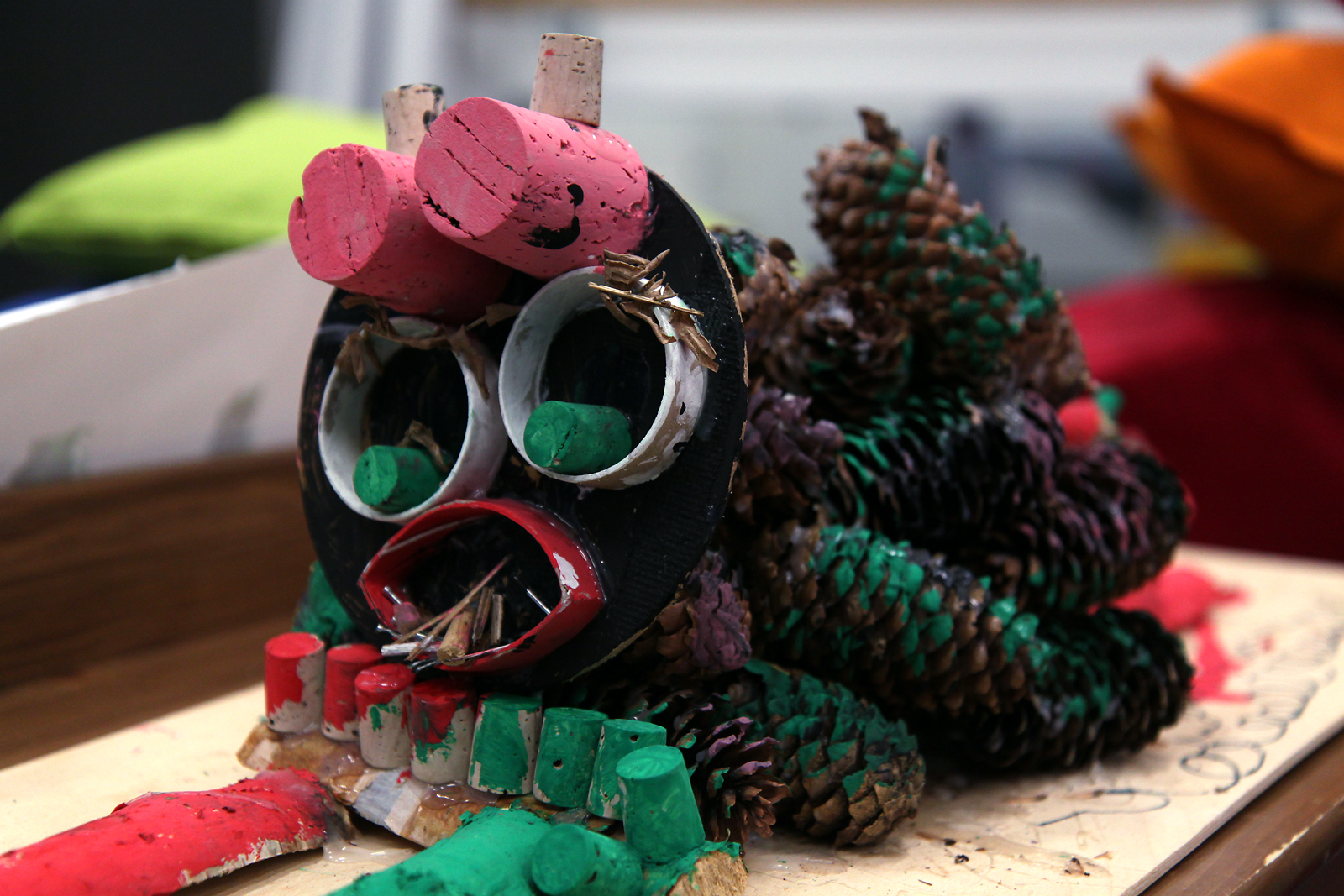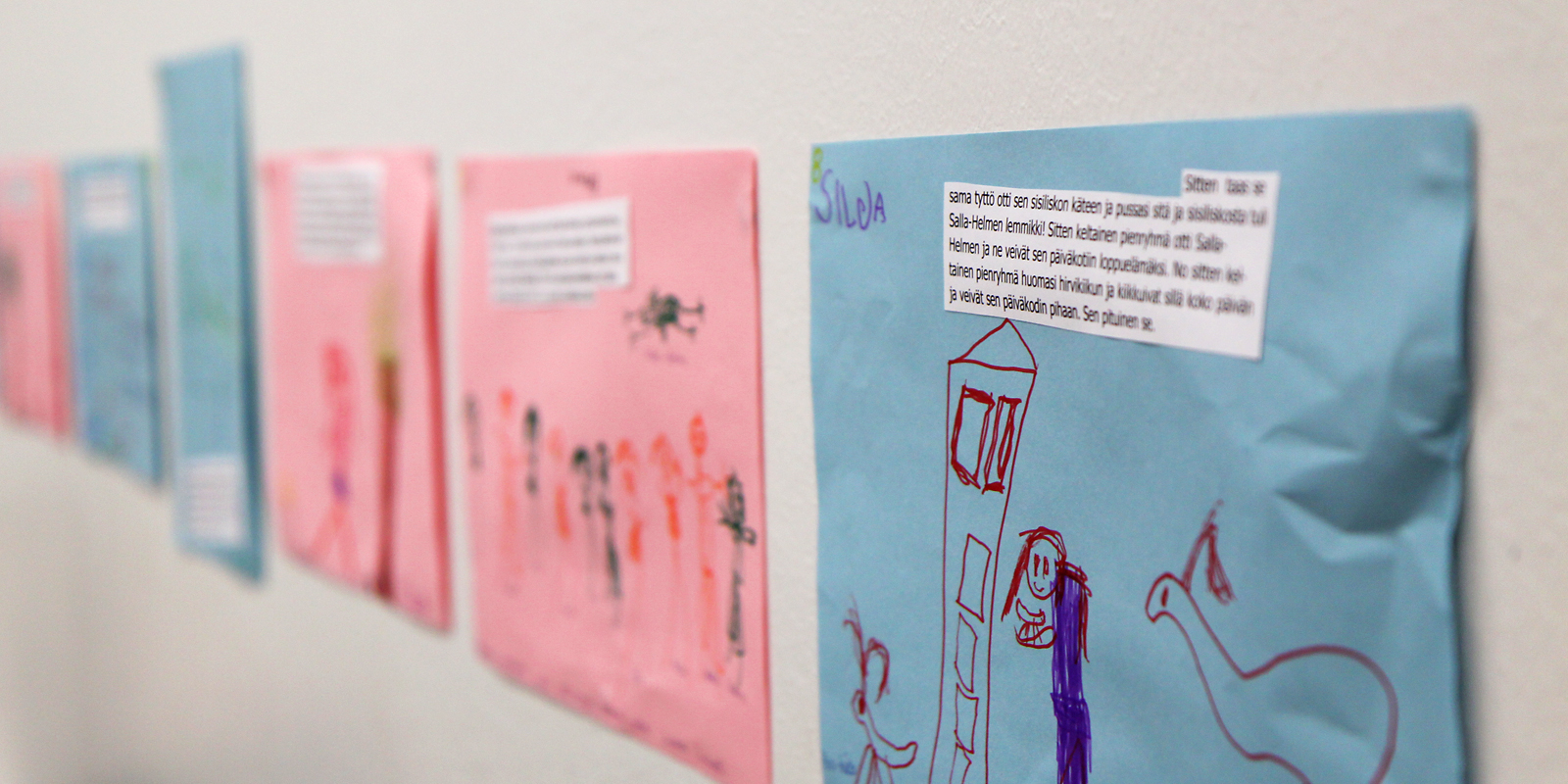Children won with a weird forest creature

An innovation competition targeted to children looked for new wood-inspired things that could be part of daily life. The class for children under school age was won by 4–5-year-olds from the Leinelä day care centre.
The mood in the playground of the Leinelä day care centre in Vantaa is celebratory and boisterous. Children, their teachers and even some parents are present. A party planned by the children is about to start.

An object wrapped in white paper and red ribbon stands in the playground. Kindergarten teacher Ms. Heidi Rajatammi and Ms. Maija Kovanen, Planner at the Finnish Forest Association, tell us what is under the wraps: the award for the winners in the Keksi metsässä [Invent in Forest] competition.
Kukka, Silja and Valtteri unwrap the object with speed. A wooden Hirvi [elk] swing made by Lappset is revealed. What shall we call it, Rajatammi asks. “Salla-Helmi-Tähti-Kapula”, the trio answers in chorus.
To an onlooker it seems that the prize comes as no surprise. Maybe the kids were there when it was wrapped? Valtteri climbs on to the swing with practice. Others follow.
First sept was to figure out what inventing means
Kukka, Silja and Valtteri, as well as Lilja and Onni, are to be thanked for the fine new swing. Their work Salla-Helmi ja suuri keksimisprojekti [Salla-Helmi and the great invention project] won the competition. The winning work is a picture story covering two months in spring 2014.

The kids learned what things are made out of wood and thought about what inventing means. They went for forest walks, observed and thought about natural phenomena and figured out explanations for them.
During the project a weird creature living in forests called Salla-Helmi was born – obviously also an inspiration for the name given to the elk swing. We could all see Salla-Helmi inside the day care centre, as the party moved indoors to drink juice, eat biscuits and have a good time.
You can be noisy in a forest
”Inventing things is easy. You just need to think,” explains Kukka. Salla-Helmi lives in forests, though the children never met it there. “We made it ourselves. It was fun,” Kukka says.
”It’s fun being in the forest, you can be noisy there,” says Valtteri. It seems the next question is too long coming, so Valtteri leaves the interview in his soapbox vehicle.
Rajatammi says that the competition was well suited to 4–5-year-olds. “This is the kind of stuff we do anyway. We take walks in the forest and talk about things that occur to the children. This time we just documented it more carefully than usual.”

The competition jury appreciated the whole process of making the winning work. The guidance provided by the teachers was discreet. The kids were given enough information but they were free to use their own imagination and invention all the time.
In the jury’s opinion, the winning work is an example of how day care centres can make use of a nearby forest in learning and education.
The fact that the kids remember the competition even though the work was submitted back in April bears witness to its success, Rajatammi says. For 4–5-year-olds, the time from April to November is long.
The aim of the competition was to find ideas inspired by nature in children, inventions spurred by forest for everyday activity, or just something new to make out of wood. There were two classes, one for school kids and the other for children under school age. The Lappset company donated outdoor equipment for the winners in both classes and the OP-Pohjola bank gave cash prizes for the runners-up.
The competition was organized by On a Forest Trail group which supports forest teaching in schools and day care centres.

Kirjoita kommentti